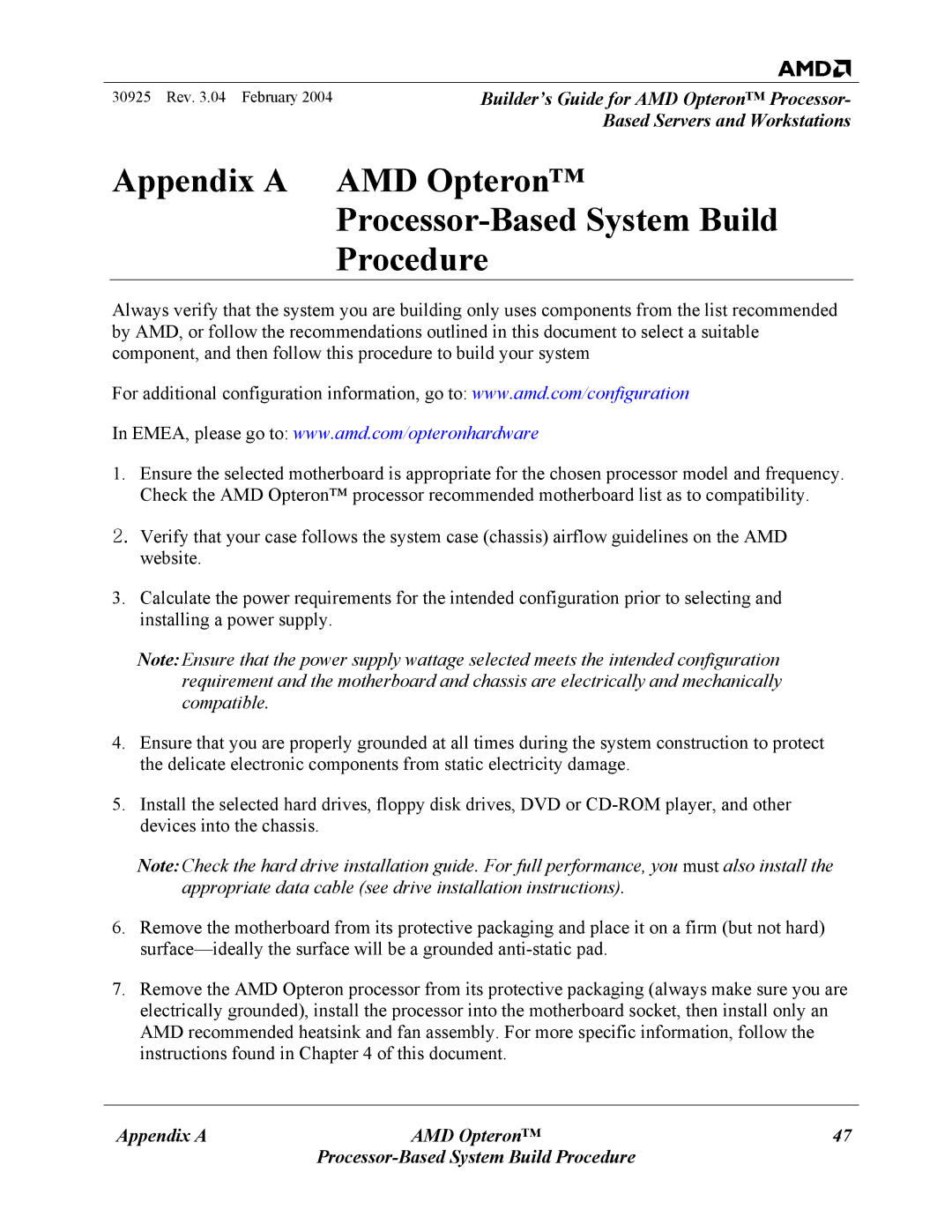
30925 Rev. 3.04 February 2004 | Builder’s Guide for AMD Opteron™ Processor- |
| Based Servers and Workstations |
Appendix A AMD Opteron™
Procedure
Always verify that the system you are building only uses components from the list recommended by AMD, or follow the recommendations outlined in this document to select a suitable component, and then follow this procedure to build your system
For additional configuration information, go to: www.amd.com/configuration
In EMEA, please go to: www.amd.com/opteronhardware
1.Ensure the selected motherboard is appropriate for the chosen processor model and frequency. Check the AMD Opteron™ processor recommended motherboard list as to compatibility.
2.Verify that your case follows the system case (chassis) airflow guidelines on the AMD website.
3.Calculate the power requirements for the intended configuration prior to selecting and installing a power supply.
Note: Ensure that the power supply wattage selected meets the intended configuration requirement and the motherboard and chassis are electrically and mechanically compatible.
4.Ensure that you are properly grounded at all times during the system construction to protect the delicate electronic components from static electricity damage.
5.Install the selected hard drives, floppy disk drives, DVD or
Note: Check the hard drive installation guide. For full performance, you must also install the appropriate data cable (see drive installation instructions).
6.Remove the motherboard from its protective packaging and place it on a firm (but not hard)
7.Remove the AMD Opteron processor from its protective packaging (always make sure you are electrically grounded), install the processor into the motherboard socket, then install only an AMD recommended heatsink and fan assembly. For more specific information, follow the instructions found in Chapter 4 of this document.
Appendix A | AMD Opteron™ | 47 |
|
|
